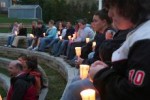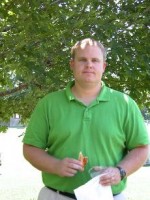Faculty Column
One of the most important observations I’ve heard students voice in my classes about their lives is that one of the toughest challenges for their generation is dealing with the stress and complexity of our modern, electronic age.They say there are so many choices and so much information that it’s hard to know where to turn. I’ve thought often about this and wondered how we can simplify our lives in this information age. I’m particularly concerned about the choices we make regarding nuclear weapons because I consider them the greatest threat to human survival, given that the nations in the world have enough firepower to destroy us all (5,000 times the firepower we had in WWII, a war that killed 50 million people).
To that end, I’ve helped organize events this week (Sept. 9-15) to view, listen and reflect about the atomic bombing of Hiroshima, Japan, and I hope you’ll take the opportunity to attend them.
The issue of nuclear weapons is like so many other controversial issues. How do we understand an issue that will determine our morals and values, or an issue that is of extreme importance to the future of humanity or our planet? For years in my classes I’ve read papers and heard speeches in which students have defended their positions on issues like war, abortion, legalization of marijuana, capital punishment, gun control, etc.
And generally, they’ve done a fine job providing evidence to support their positions. But there is a problem in our general method of debate and argument, in that, regardless of who is right or wrong, one can always find an expert or statistic to support her/his position. There is no shortage of information in our modern world. There are experts on both sides, many who know how to use “spin” and public relations to “sweeten” their position.
The result is often confusion and uncertainly. I accept that often truth is gray, and not black and white, but then how am I to make ethical choices to guide myself in life? How am I to decide that an issue is at least 60 percent-40 percent and therefore I can lean to the 60 percent side?
The conclusion that I’ve come to is that, given the overload of information, I find it helpful, after careful consideration of the facts, to rely also on other approaches, simpler and less complex approaches. That is, I try to do what literature often does, and I try to view the issue through different eyeglasses, such as a symbol, metaphor, motif or image, or a personal experience, a gut reaction or a spiritual/mystical insight. I let that one simple photo, picture or experience guide me.
Allow me to return to nuclear weapons and Hiroshima to explain this. Experts on both sides debate the dangers or necessity of nuclear weapons. So, what should we do? After listening to both sides, I would suggest trying to “simplify” the issue. Turn to other things that may produce an “aha” moment. Turn to a symbol, metaphor, motif or image, or a personal experience, a gut reaction or a spiritual insight.
Also, I find there is no better way to discover truth than to walk in another’s “shoes” for a while. It’s not an easy thing to do, and it may involve experiencing another’s pain, but it is a sure method to come to truth.
That was my approach to Hiroshima — to go there, walk in the city, visit the Peace Park and Museum, and try to experience the bombing from a Japanese perspective. Not all of us can travel to Hiroshima, and so, I’ve brought back 30 posters from the Peace Museum that I’ve displayed in the library student lounge/exhibit room from Sept. 9-15. Please visit the exhibit. View the posters, and then try to sit quietly and reflect. Try to use your imagination and travel back in time and experience the bombing as the victims did. And after you’ve done that, allow yourself to record on your mind and heart one photo, one symbol, one gut reaction, one spiritual insight that you can rely upon to guide you on this crucial issue.
Also, if you have time, try to attend the Soundings Presentation (Thursday, Sept. 13, 12:30 p.m., Herrick Auditorium) that I’ll be giving about my trip to Hiroshima last year, and as a result, my reflections about nuclear weapons. You may find it revealing.
Meanwhile, think about what I’m suggesting in this column, that it may be possible to simplify complex moral and ethical issues by also relying on one or several symbols, images, photos, pictures, motifs or metaphors, or a personal experience, a gut reaction, or a spiritual insight.






